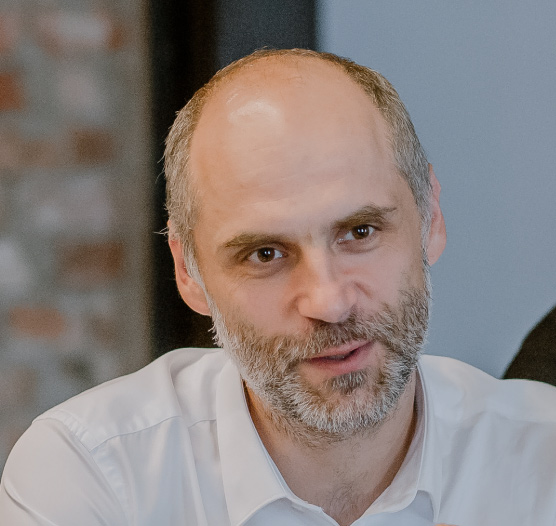

Przemysław Zakrzewski
The Length of the Recruitment Process: A Clash of Perspectives
Engineers and HR professionals may have differing perspectives on the length of the recruitment process due to their distinct priorities, perspectives, and roles within an organization. We may want to look at the issue from couple of dimensions:
TALENT ACQUISITION MEASUREMENTS
Time-to-hite vs. attrition rate
Typically, TA performance is assessed based on metrics such as the quantity of successfully closed recruitments within a specific timeframe or the time-to-hire. However, these metrics often lack a direct link to the broader efficiency model of the entire organization. In the scorecards of TA professionals, seldom do we find indicators related to attrition rates, KPIs associated with employee engagement, or measures reflecting end customer satisfaction - but certainly those ones are important for managers and their teams.
Prolonged interviews may lead to candidate disengagement, with potential consequences such as loss of interest or acceptance of competing job offers.
Financial gains and Candidate Retention
In outsourced TA activities, the primary focus may be on directly converting successfully closed recruitment cases into monetary gains. However, this dynamic may not hold true for internal TA processes. Lengthy interview processes can be demanding and time-consuming for candidates. Employers aim to enhance the candidate experience by shortening the interview cycle, demonstrating respect for candidates' time, and sustaining their interest in the position. Prolonged interviews may lead to candidate disengagement, with potential consequences such as loss of interest or acceptance of competing job offers. Shortening the interview process offers a competitive edge by facilitating quicker decision-making and reducing the risk of losing top candidates to rival organizations. This approach is particularly attractive to candidates currently employed or not actively seeking new opportunities, as it aligns with their preferences for a concise and efficient process, minimizing disruptions to their current work commitments
ENGINEERS’ MOTIVATORS
Freelance engineer
For freelance engineers, emphasis is placed more on the advancement and refinement of technology, as well as the finesse of design, rather than the routine application of technology in everyday scenarios. This group of specialists aims to swiftly and efficiently achieve the highest level of expertise in a specific domain while contributing to the development of multiple applications. Another crucial aspect is the willingness and desire of engineers to adapt rapidly to changes in the technological landscape, transitioning seamlessly between industries such as manufacturing, e-commerce, fintech, and beyond. Usually in such cases those persons are more open to changing jobs frequently and they expect a fast and quick recruitment process. If you need such team members then you can't afford a multi-stage recruitment process, stretched over multiple levels of approval and checking for fit with the whole.
Stability can provide a sense of security and reduce concerns about job security. For such individuals, a longer hiring process is an opportunity to get to know people better, get a cultural fit and talk to key people in the organization.
Everybody has its own values
There are also engineers who prioritize sharing the same values with their employer and understanding the purpose of the company's mission above all else. Alignment with values can create a strong sense of belonging for them. A good work-life balance is increasingly important for professionals. Companies that prioritize and support a healthy work-life balance are likely to retain employees who value this aspect of their professional lives. Positive relationships with colleagues and mentors can contribute to a sense of community within a company. Long-term professional relationships and a support network can be strong motivators for engineers to stay with an organization. Engineers may prefer to work for companies with financial stability and a strong market position. Stability can provide a sense of security and reduce concerns about job security. For such individuals, a longer hiring process is an opportunity to get to know people better, get a cultural fit and talk to key people in the organization. A multi-step process can convince such individuals that their knowledge and commitment will be used to the benefit of both parties.
Engineers may accept a longer interview if the questions are well-worded, relevant and effectively assess their skills.
KEEP FOCUS OF ENGINEERS WHEN YOU DECIDE TO RUN MULTISTAGE HIRING PROCESS
To minimize the risks associated with a multi-stage recruitment process, care should be taken to create interesting and challenging recruitment tasks that will attract the attention and keep the interest of fast-paced oriented individuals. In this case, you should also clearly communicate the stages of the process, its value to the candidate and the organization, and the feedback the candidate will receive after each stage. Job interviews can be mentally exhausting. Engineers may have to go through multiple rounds of interviews with different companies, and each round typically includes coding problem solving, technical discussions and behavioral questions. The cumulative effect of this process can lead to interview fatigue. Engineers may accept a longer interview if the questions are well-worded, relevant and effectively assess their skills. Long interviews that include unnecessary or repetitive questions may be seen as a waste of time.
THE TYPE OF ORGANIZATION INFLUENCES DECISION-MAKING FACTORS IN THE RECRUITMENT PROCESS
Local vs. Global
The choice between having a local or global team can significantly impact the decision to opt for a short or multistage recruitment process. The geographical dispersion of teams may necessitate adjustments to ensure an efficient and streamlined hiring process that accommodates diverse talent pools.
Software House vs. Research Center
The nature of tasks, projects, and products supported by either a software house or a research center can influence the recruitment process as well. Different types of organizations may require tailored approaches to attract candidates with the right skills and expertise. The dynamic and innovative nature of a software house may demand a faster, adaptive hiring process, while a research center may prioritize thorough assessments.
Flat vs. Matrix
The organizational structure, whether hierarchical or matrix-based, also plays a role in shaping the processes. Hierarchical structures may involve a more straightforward decision-making process, while matrix structures may require collaboration and coordination across various teams, impacting the complexity of the recruitment. Understanding the organizational dynamics is crucial for designing an effective recruitment strategy that aligns with the structure of the organization.
If key aspects of a candidate's fit for the role are omitted, the organization runs the risk of hiring employees who may not be the best fit for the organizational
NO MATTER WHETHER THE PROCESS IS SHORTER OR LONGER, RISKS EXIST AND YOU NEED TO ADDRESS THEM
However, there are several potential risks associated with an inefficient recruitment process - whether it is abbreviated, rapid or multi-stage. First of all, the risk of insufficient evaluation of candidates must be considered in any case. If key aspects of a candidate's fit for the role are omitted, the organization runs the risk of hiring employees who may not be the best fit for the organizational structure, increasing the risk of employee turnover. Additionally, a mismatched recruitment process may lead to inconsistency between the expectations of the employer and the candidate. Lack of adequate time to fully understand mutual expectations may result in a mismatch between the job role and the candidate's skills, which in turn may generate dissatisfaction. An important aspect, often overlooked, is the assessment of cultural fit. Good cultural alignment is crucial to long-term employee satisfaction and retention. If the recruitment process is too short, there may not be enough opportunity to assess whether the candidate aligns with the organization's values and work culture, potentially leading to higher employee turnover.
In short, the debate over the length of the recruitment process is complex and requires a balanced approach. It is important for both hiring managers, HR professionals and engineers to understand the perspectives and needs of both parties to achieve a recruitment process that is both effective and rewarding for all participants.
Przemysław Zakrzewski
Uważa siebie za wielkiego pasjonata nowych technologii, któremu nie umknie żadna nowinka. Od wielu lat zafascynowany cyfrowymi technologiami oraz definiowaniem przyszłych interfejsów i metod współpracy człowiek-maszyna, maszyna-maszyna... Continue reading...